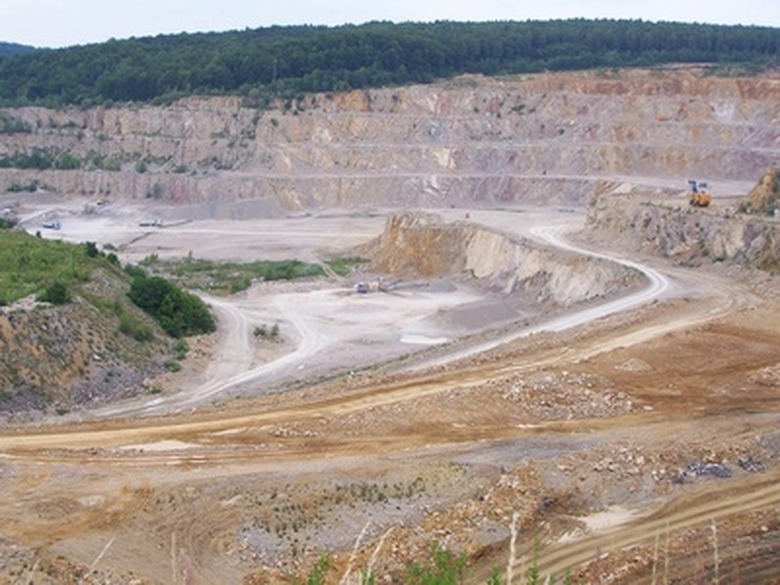Environmental Hazards Of Limestone Mining
Limestone, composed mostly of calcium carbonate, is used primarily to produce Portland cement for the building industry. Other products that use limestone include breakfast cereal, paint, calcium supplements, antacid tablets, paper and white roofing materials. Limestone is a karst-forming rock, which produce landforms that are formed by dissolution, and represents about 10 percent of the world's land surface. But limestone cannot be mined without impacting the environment.
Groundwater
Groundwater
Groundwater quality can be affected by quarrying limestone by increasing sediment and accidental spills directly into the aquifers. These contaminants can also include material like oil and gas from mining equipment. Because contaminants in ground water move faster through limestone than other types of rocks, quarries in karst areas must be especially careful. Quarrying also removes the entire subcutaneous zone, an important ground-water storage area. Pumping water out of underground mines changes the direction and the amount of groundwater flow. When the operation of a quarry or mine ends, the direct impacts on groundwater quality may decreased but the long-term contamination can persist.
Subsidence
Subsidence
Limestone is often mined from a quarry. However, underground limestone mines can be found in the central and eastern United States, especially near cities. In humid climates, limestone dissolves quickly and is carried away by water. This creates caves which can become weak and collapse. Underground mining of limestone can cause a cascading environmental impact. Mining in the karst can lower the water table, which removes the support of rock that overlies water-filled caverns, which can create sinkholes.
Habitat Destruction
Habitat Destruction
The biodiversity of karst ecosystems means some species are restricted to single-cave ecosystems. About 47 species of aquatic and terrestrial invertebrates have been discovered in the Movile Cave in southern Romania and most have are endemic to that particular cave system. As rock is removed by quarrying, any cave passages — and the habitat it provides — are destroyed. Animals that inhabit these areas that are mobile will be able to find new habitats to survive. Those species that have adapted to such deep cave zones will simply perish.
Dust
Dust
Dust is one of the most visible impacts associated with limestone quarrying due to the drilling, crushing and screening of the rock. The mine site conditions can affect the impact of dust generated during extraction, including rock properties, moisture, ambient air currents and prevailing winds, and the proximity to population centers. Fugitive dust can escape from trucks traveling on excavation haul roads and from blasting. This airborne dust can travel long distances from a mining site and affect urban and rural residential areas downwind.
Cite This Article
MLA
Barber, David. "Environmental Hazards Of Limestone Mining" sciencing.com, https://www.sciencing.com/environmental-hazards-of-limestone-mining-13663264/. 26 September 2017.
APA
Barber, David. (2017, September 26). Environmental Hazards Of Limestone Mining. sciencing.com. Retrieved from https://www.sciencing.com/environmental-hazards-of-limestone-mining-13663264/
Chicago
Barber, David. Environmental Hazards Of Limestone Mining last modified August 30, 2022. https://www.sciencing.com/environmental-hazards-of-limestone-mining-13663264/
